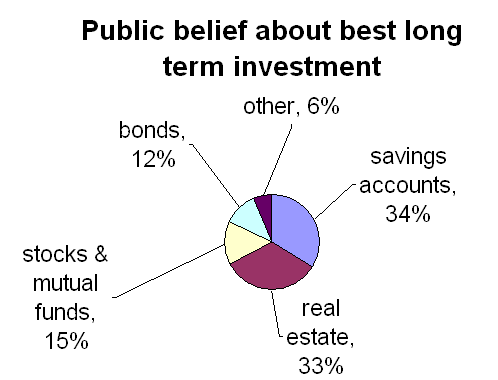 In the never-ending quest for the unpopular asset class that you might be able to pick up on the cheap it is difficult to go past commercial real estate at the moment.
In the never-ending quest for the unpopular asset class that you might be able to pick up on the cheap it is difficult to go past commercial real estate at the moment.
But there are a few problems:
- commercial real estate can be very illiquid
- with the gearing in this sector, falling property values, and historically low interest rates that may increase, there may be risk in a particular fund that it is hard to identify
So what might be interesting would be a commercial real estate exchange traded fund that is both liquid and spread across a number of different property trusts.
In Australia you can find exactly this with the State Street Spider S&P/ASX 200 Listed Property Fund (roughly $15 billion market cap with 16 holdings and a .4% management cost with quarterly income distributions).
SLF Net Asset Value has halved over the last year
If your approach to buying stocks is chartist/technical, stop reading here because the chart (ASX:SLF)
is a bit ugly to look at, with net asset value at 1/2 of its 12 month high, and down 2/3rds over the last 2 years.
We have started (and intend to continue) buying it in multiple small parcels and as a long term investment.
SLF income picture
SLF is currently trading at a nominal double digit yield which is estimated to fall to about 8-9% i.e. you can assume that a further fall in income distribution is already factored into the current price.
Roughly 7 out of 10 of the top 10 holdings are trading at single digit PEs and the outlook from analysts for the whole property industry is still gloomy.
Stock-Specific Risk in SLF
It seems strange to talk about stock specific risk with an ETF but as of August 7th Westfield made up 47% of total assets so if you don’t like Westfield don’t buy this (here are the top 10 holdings):
| Issue Name | Sector Classification | % of Total Assets |
| Westfield Group | Retail Reits | 47.09 |
| Stockland | Diversified Reits | 13.11 |
| Gpt Group | Diversified Reits | 7.83 |
| Cfs Retail Prop | Retail Reits | 6.30 |
| Dexus Property Gp | Diversified Reits | 6.11 |
| Mirvac Group | Diversified Reits | 5.32 |
| Cmnwlth Prop Offic | Office Reits | 2.97 |
| Ing Office Fund | Office Reits | 2.64 |
| Goodman Group | Industrial Reits | 2.21 |
| Macquarie Office | Office Reits | 1.91 |
| Macquarie Countryw | Retail Reits | 1.32 |
| Bunnings Warehouse | Industrial Reits | 0.99 |
| Abacus Property Gr | Diversified Reits | 0.66 |
| Ing Industrial Fd | Industrial Reits | 0.61 |
| Charter Hall Group | Diversified Reits | 0.58 |
| Astro Japan Proper | Diversified Reits | 0.35 |
Here’s the sector breakdown:
| Sector | % of Total Assets |
| Retail Reits | 54.34 |
| Diversified Reits | 34.42 |
| Office Reits | 7.51 |
| Industrial Reits | 3.73 |
Like it? Hate the idea? Let us know by commenting below!
Posted under index trackers
This post was written by mike on August 8, 2009

